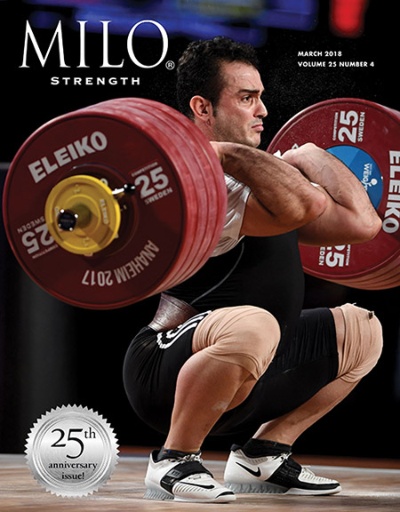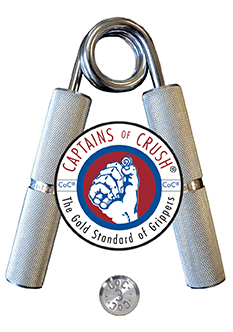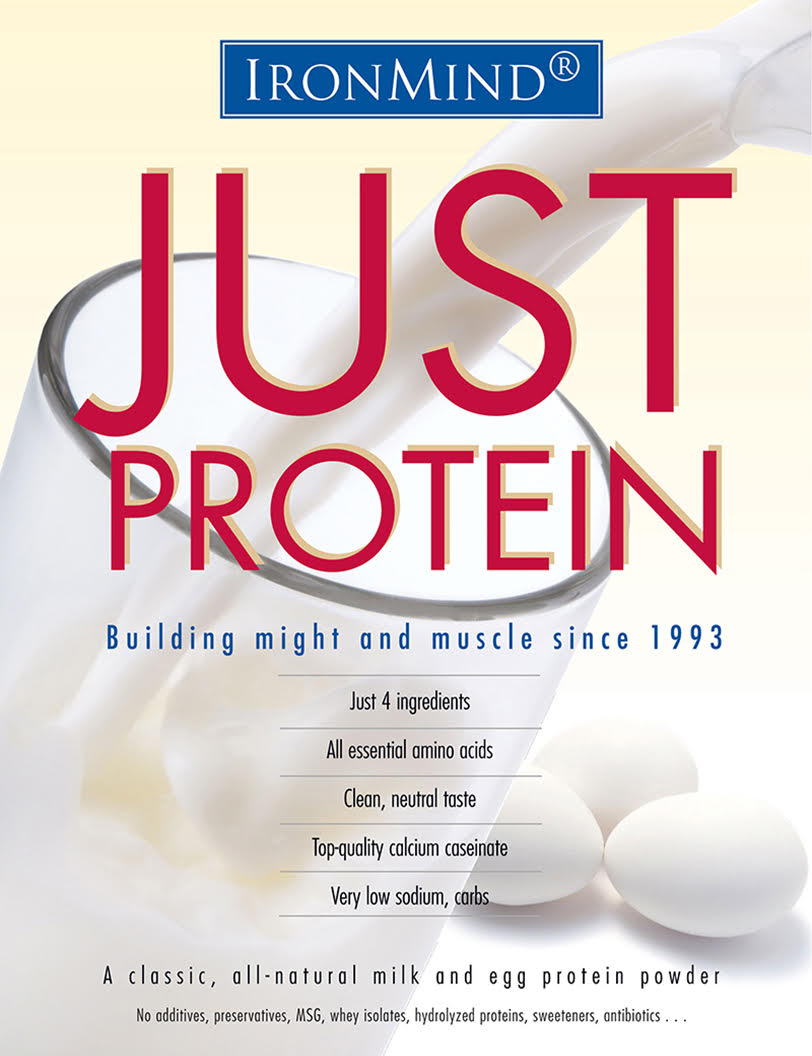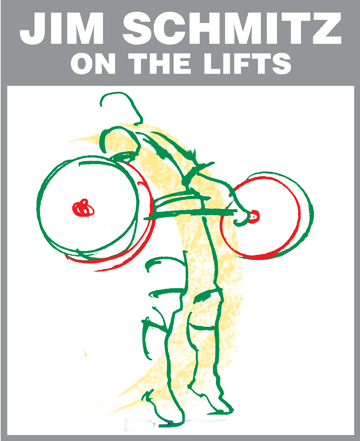
U.S. Olympic Weightlifting Team Coach 1980, 1988 & 1992 Author of Olympic-style Weightlifting for Beginner & Intermediate Weightlifters Manual and DVD
Last month I discussed the hook grip. Since we are on the subject of grabbing and holding onto the barbell, this month I want to talk about straps. When I show people how to use straps, it's always a little comical: I can put the straps on myself, but when I try to help someone else do it for the first time, it seems more difficult than it should be. Therefore, I hope you can understand my explanation of what they are and how to use them.
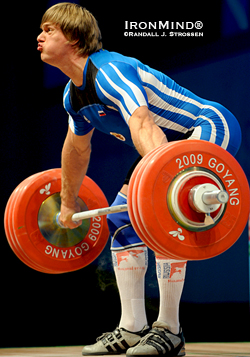
Dmitri Lapikov (Russia) smoked this 191-kg snatch in the 105s at the 2009 World Weightlifting Championships. Using straps wisely in training helps increase your top lifts in competition. IronMind® | Randall J. Strossen photo.
Weightlifting straps are approximately 1" to 1-1/2" wide, 12" to 18" long, and made out of leather, canvas, or nylon. They are either attached at the ends, or one end is looped over and sewn to the strap and then the strap is passed back through the loop. Your hand goes through the space created by a looped strap so that the strap rests on the back of your hand just below your wrist. The rest of the strap goes over and outside your thumb on one side, and outside of your hand (just below the wrist) and down your palm (to slightly beyond your fingers) on the other side. You now wrap the strap around the barbell by going underneath and around the bar, and then cinch it up so that the bar is tight in your hand—you are gripping the bar with the strap wrapped around it so that it will not slip out. Once you have the straps somewhat in place, with your grip where you want it, you rotate the bar to tighten the straps to the bar and secure your grip. In other words, wrap the straps around your hands and then the bar, and then grab the bar and strap together very tightly. It takes practice and time to learn how to get the straps tight enough and just right. Also, you don't need to use a hook grip when using straps, but if it feels good for you, then do it.
Straps are used to save your hands when doing pulls, such as high pulls, shrugs and deadlifts. Straps allow you to really work your pull without thinking about your grip—you can really concentrate on finishing your pulls or deadlifts and not worry about being able to do the lift correctly because your grip is giving out. In other words, straps allow you to really go all out with quite heavy weights. For example, we often do high pulls after having done snatches and cleans. Since we are going to use more weight than our grips can handle in those movements, it is best to use straps. Straps are also used when doing repetition snatches and cleans or from the hang or the blocks. Straps can also be used for weight training exercises like lat pulldowns, chin-ups, and various dumbbell lifts.
I first read about the use of straps in the June 1965 Strength & Health magazine in an article titled "The Golden Straps" by Tommy Kono as told to John Terpak. If some of this sounds familiar, that is why.
I would like to tell a little story about the use of straps by Vasily Alexeev at the 1977 Record Makers event in Las Vegas. Alexeev was taking a workout and after a few snatches, he looked into his gym bag and couldn't find his straps, so he pulled out a pair of gym socks and wrapped them around the bar like straps. He did a couple of pulls and laughed as the socks stretched and the bar slipped from his hands. Everyone had a good laugh and someone loaned him some straps so he could continue his pulls. This took place before Bruce Wilhelm sprained Alexeev's thumb horsing around sort of arm wrestling. That's why Alexeev did one-arm snatches that year, doing 105 kg (which John Terpak said was a world record).
Always make sure you pack your straps in your gym bag—and make sure they aren't worn out, as it is quite startling when a strap blows out during a lift. I haven't seen anyone get hurt when that happens, but it could lead to an inury—or at least the end of your pulling workout—unless you have a back-up pair.
I like my lifters to use straps only for pulls and not actual lifts, as that can develop a dependency and a false sense of security. I know of too many lifters who snatched more with straps than they ever did without. I'm quite okay with using straps for snatches to build confidence, or if one's hands are sore or have torn calluses, but I really try to minimize their use. I very strongly recommend that you NEVER use straps for squat cleans—power cleans, maybe—but NEVER for squat cleans. I know of several lifters who have sprained or even broken their wrists using straps for squat cleans—you just can't get away from the bar fast enough with straps. In the snatch it is easier to escape a missed weight when using straps, but not so in the squat clean. Power cleans are okay, but still dangerous if you end up going into a squat clean. This raises the issue that you only want to wrap your straps around the bar once, no more, so you can release your grip and get away from the bar if you miss it.
I would never recommend using straps while warming up, but there are always exceptions to the rules. For example, Waldemar Baszanowski (1964 and 1968 Olympic champion and many-time world champion and record holder) actually warmed up using straps, and his first competition attemp was his first lift without them. He said he did this to save his hands for the competition. If you use straps when doing the lifts in training, I recommend that you stop using them one or two weeks before a competition so your hands will be strong and tough. Besides developing a dependency, your hands might get soft and then be susceptible to tears.
When I'm teaching beginners I don't have them use straps at all, as I want them to develop their grips and I know that their grips will give out before their backs or other parts. After three months I let them use straps for pulls and deadlifts only. That is pretty much how I have my advanced lifters use them as well. When lifting from the hang or off the blocks we use straps, but again, not for cleans.
One more little story about using straps when injured. In 1975, Dan Cantore carelessly went to put 170 kg back in the squat racks after a set of front squats. He sort of tossed the bar into the racks and it bounced off and back and caught the tip of his left ring finger on a sharp edge of the squat rack and cut it off. We picked up the tip and took him to the emergency room. They weren't able to sew the tip back on, so they grafted some skin from his biceps area. With six weeks to go before the Nationals/Pan American Games tryouts, all Dan could do were squats, good mornings, and push jerks. Three weeks out he started doing pulls, and two weeks out he started doing the lifts with straps. He used straps for every lift in training and only went without them at the competition. He didn't lift his best, but he lifted enough to win and make the Pan Am Team.
Straps have an important role in your training, but don't get dependent upon them. Use them for pulls anytime and for the lifts very sparingly.








